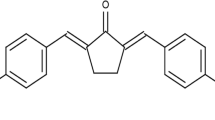Abstract
Current cancer treatments lead to insufficient distribution of therapeutic agents in tumor cells due to their lack of selectivity often causing adverse effects in the normal cell uptake of the drug. The challenge is to design therapeutic drugs able to maximize the treatment of malignant cancers while minimizing their adverse effects. In this study, 10B incorporation in the B chronic lymphocytic leukemia cell line MEC-1 was investigated. The cells were treated with l-p-10borophenylalanine (10BPA) and 10boron immuno-nanoparticles (BNPs) loaded with 10BPA with or without the anti-CD20 monoclonal antibody for different contact times. The uptake of 10B by the cells was determined by the inductively coupled plasma mass spectrometry (ICP-MS) after acid mineralization. To obtain accurate and consistent data, the analytical procedure was optimized using factorial experimental design. It was observed that BNP loaded with 10BPA and anti-CD20 represents the best carrier system for 10B in B cells for long time (>10 h) whereas 10BPA seems to be the top drug for short time (< 4 h) procedures.
Similar content being viewed by others
References
Arias, J. L., Reddy, L. H., & Couvreur, P. (2009). Polymeric nanoparticulate system augmented the anticancer therapeutic efficacy of gemcitabine. Journal of Drug Target, 17, 586–598. DOI: 10.1080/10611860903105739.
Barth, R. F., Coderre, J. A., Vicente, M. G. H., & Blue, T. E. (2005). Boron neutron capture therapy of cancer: Current status and future prospects. Clinical Cancer Research, 11, 3987–4002. DOI: 10.1158/1078-0432.ccr-05-0035.
Bevilacqua, R., Giannini, G., Calligaris, F., Fontanarosa, D., Longo, F., Scian, G., Totaro, P., Vittor, K., Vallazza, E., Severgnini, M., Vidimari, R., Barthesaghi, G., Conti, V., Mascagna, V., Perboni, C., Prest, M., Gambarini, G., Gay, S., Valente, M. A., Mozzanica, A., Monti, A., Ostinelli, A., Azario, L., Fidanzio, A., Piermattei, A., Borla, O., Durisi, E., Fasolo, F., Nastasi, U., Perosino, E., Zanini, A., & Tommasino, L. (2007). PhoNeS:A novel approach to BNCT with conventional radiotherapy accelerators. Nuclear Instruments and Methods in Physics Research A, Accelerators, Spectrometers, Detectors and Associated Equipment, 572, 231–232. DOI: 10.1016/j.nima.2006.10.290.
Evans, S., & Krähenbühl, U. (1994). Improved boron determination in biological-material by inductively-coupled plasmamass spectrometry. Journal of Analytical Atomic Spectrometry, 9, 1249–1253. DOI: 10.1039/ja9940901249.
Goodwin, J. T., Farr, L. E., Sweet, W. H., & Robertson, J. S. (1955). Pathological study of eight patients with glioblastoma multiforme treated by neutron-capture therapy using boron 10. Cancer, 8, 601–615. DOI: 10.1002/1097-0142(1955)8:3〈601::aid-cncr2820080326〉3.0.co;2-r.
Leardi, R. (2009). Experimental design in chemistry: A tutorial. Analytica Chimica Acta, 652, 161–172. DOI: 10.1016/j.aca.2009.06.015.
Luo, G. P., Yu, X. J., Jin, C., Yang, F., Fu, D. L., Long, J., Xu, J., Zhan, C. G., & Lu, W. Y. (2010). LyP-1-conjugated nanoparticles for targeting drug delivery to lymphatic metastatic tumours. Internationa Journal of Pharmaceutics, 385, 150–156. DOI: 10.1016/j.ijpharm.2009.10.014.
Marin, G. H., Mansilla, E., Mezzaroba, N., Zorzet, S., Nunez, L., Larsen, G., Tau, J. M., Maceira, A., Spretz, R., Mertz, C., Ingrao, S., Tripodo, C., Tedesco, F., & Macor, P. (2010). Exploratory study on the effects of biodegradable nanoparticles with drugs on malignant B cells and on a human/mouse model of Burkitt lymphoma. Current Clinical Pharmacology, 5, 246–250. DOI: 10.2174/157488410793352058.
Pandolfi, L., Giannini, G., Macor, P., Mezzaroba, N., Pozzato, G., & Vidimari, R. (2013). i-BNCT: immuno-BNCT with immuno-nanoparticle boron carriers. Applied Radiation and Isotopes. (accepted)
Rao, D. A., Forrest, M. L., Alani, A. W. G., Kwon, G. S., & Robinson, J. R. (2010). Biodegradable PLGA based nanoparticles for sustained regional lymphatic drug delivery. Journal of Pharmaceutical Science, 99, 2018–2031. DOI: 10.1002/jps.21970.
Sah, R. N., & Brown, P. H. (1997). Boron determination-a review of analytical methods. Microchemical Journal, 56, 285–304. DOI: 10.1006/mchj.1997.1428.
Author information
Authors and Affiliations
Corresponding author
Rights and permissions
About this article
Cite this article
Persico, M.G., Chiari, P., Biesuz, R. et al. Determination of 10B in lymphoma human cells after boron carrier treatment: comparison of 10BPA and immuno-nanoparticles. Chem. Pap. 68, 253–259 (2014). https://doi.org/10.2478/s11696-013-0435-4
Received:
Revised:
Accepted:
Published:
Issue Date:
DOI: https://doi.org/10.2478/s11696-013-0435-4




